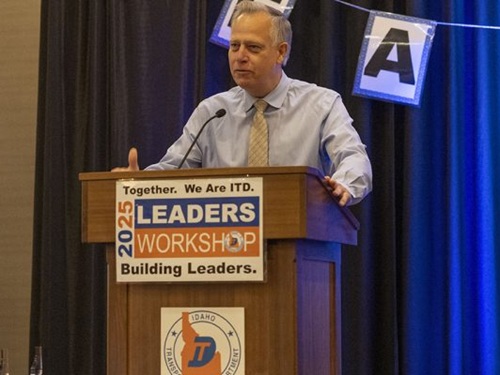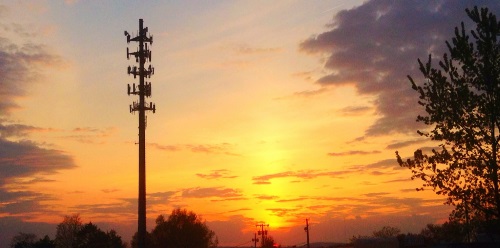A proposal by the Federal Communications Commission on Oct. 23 to open up the 6 gigahertz communication channel to more “unlicensed usage” is drawing strong pushback from a variety of transportation industry groups, which seek to preserve the full 5.9 GHz band within that spectrum for transportation safety use.
The Alliance of Automobile Manufacturers, the Association of Global Automakers, the Intelligent Transportation Society of America, the 5G Automotive Association and the American Association of State Highway and Transportation Officials issued a joint statement that “strongly supports preserving the full 5.9 GHz” band as their combined memberships “own and operate critical highway and other transportation infrastructure that connects vehicles to vehicles, to other road users, and to their environment to help reduce crashes.”

The groups said that the entire 5.9 GHz band is needed to achieve the “full benefit” of vehicle communication with bicyclists, pedestrians, traffic lights, and advanced alerts of hazards like ice on roadways – commonly known as vehicle-to-everything or V2X systems.
“Additionally, they can enhance automated driving systems, which hold the promise to provide numerous economic, environmental, and societal benefits, such as decreased congestion and fuel consumption, and increased access for the elderly and disabled,” the groups said.
“We are on the cusp of a major breakthrough in vehicle connectivity and safety innovations,” they added. “Millions of dollars have already been invested in this effort, including incorporating connected vehicle technologies into infrastructure. With significant past and present investments in connected vehicle innovations, V2X technologies are already being deployed for the purposes of improving road safety. This will only continue moving forward. Any unlicensed use in the band should be done without harmful interference to the incumbent technology or other intelligent transportation systems technologies.”

State department of transportation executives have voiced similar arguments to administration officials specifically over the course of the year, noting in letter in January that they need the 5.9 GHz band reserved for the use of dedicated short range communications or DSRC that govern numerous systems such as “red light violation warnings, reduced speed zone warnings, curve speed warnings and spot weather-impact warnings.”
The FCC does not see it that way. In a statement, FCC Commissioner Michael O’Reilly said that the “exponential growth” of wireless data, especially over unlicensed networks, has led to “severe congestion in our highly-prized unlicensed spectrum bands,” primarily in the 2.4 and 5 GHz bands.
“Consider that total U.S. Internet traffic is estimated to increase three-fold between 2016 and 2021, and Wi-Fi networks will grow to carry almost 52 percent of this traffic,” he added. “For these reasons, I pushed early in my term to make additional bands available to the unlicensed community. Studies in the record demonstrate that unlicensed spectrum at 6 GHz can likely be done without causing harmful interference to existing incumbents. Now, if we could only open up the 5.9 GHz Band for unlicensed use as well, for which I believe there are four solid votes in favor, we would really be on to something special, as it’s the missing link between the 5 GHz and 6 GHz bands.”

Yet USDOT and the National Highway Traffic Safety Administration are contradicting that view, stressing in a statement on Oct. 24 that “preserving the 5.9 GHz band for transportation communications is essential to public safety today and in the future.”
NHTSA said that the automotive industry and many municipalities are “already deploying V2X technology and actively utilizing all seven channels of the 5.9 GHz band. There are more than 70 active deployments of V2X communications with thousands of vehicles already on the road.”
The USDOT added that its recently released AV 3.0 guidance highlights a three-phase research plan that is currently underway and was developed collaboratively with the FCC and the U.S. Department of Commerce to “explore spectrum sharing technology that maintains priority use for vehicle communications.”
The three phases of that test plan are “interdependent and ongoing,” the agency added, with the testing to show whether unlicensed devices can safely operate in the 5.9 GHz band.
“With lifesaving safety capabilities at stake, the department maintains that all three phases of research must be completed before any decisions about spectrum reallocation can be made,” USDOT said.
 Top Stories
Top Stories
AASHTO Details Annual Meeting Knowledge Sessions
October 24, 2025 Top Stories
Top Stories

